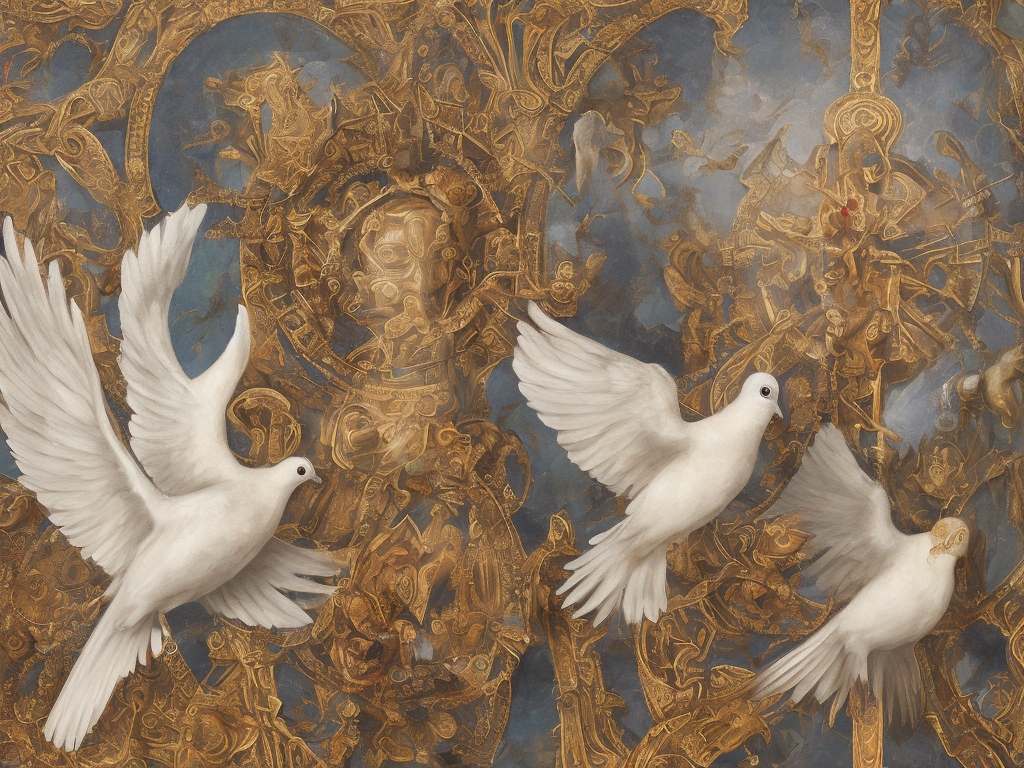
Christianity is one of the largest religions in the world, and it has a long and complex history. The two largest Christian denominations are Orthodox and Catholic. While these two traditions share many similarities, there are some significant differences between them that are worth exploring.
Central Beliefs
One of the main differences between Orthodox and Catholic Christianity is in their central beliefs. Both traditions share a belief in the Holy Trinity (Father, Son, and Holy Spirit), the divinity of Jesus Christ, the existence of sin, the need for salvation, and the importance of the Bible. However, there are some differences in their understanding of these beliefs.
For example, the Orthodox tradition places a greater emphasis on the mystical and experiential aspects of faith. They see the sacraments (such as baptism and communion) as being essential for spiritual growth, and they place great importance on prayer and contemplation. The Catholic tradition, on the other hand, places more emphasis on rationality and intellectual inquiry. They view the sacraments as important, but they also place a greater emphasis on philosophical and theological discussion.
Leadership
Another major difference between the Orthodox and Catholic traditions is in their leadership structures. In the Catholic tradition, the Pope is considered to be the head of the Church, and he has the final say in matters of doctrine and policy. The Pope is surrounded by a group of cardinals, bishops, and priests who assist him in the governance of the Church.
In the Orthodox tradition, there is no one leader who has universal authority over all the churches. Instead, each national or regional church is led by a bishop, and these bishops come together periodically to discuss matters of common concern. While there is no central authority, the Patriarch of Constantinople is seen as a kind of “first among equals” among the bishops.
Liturgy
The liturgy (or worship service) is another area where there are some differences between Orthodox and Catholic Christianity. Both traditions use a liturgical service, but they differ in some of the details.
In the Catholic tradition, the Mass is celebrated in Latin, with the priest facing the altar. The congregation participates through singing hymns and making responses. The Eucharist (communion) is seen as the central part of the service, and only Catholic priests are allowed to administer it.
In the Orthodox tradition, the Divine Liturgy is celebrated in the local language, with the priest facing the congregation. The liturgy is highly participatory, with the congregation sing hymns and making responses throughout the service. Communion is seen as the central part of the service, and it is administered to all who have been baptized, regardless of whether they are Orthodox or not.
Iconography
The use of icons (religious images) is another area where Orthodox and Catholic Christianity differ. In the Catholic tradition, there is a long history of using religious artwork to tell stories from the Bible and to depict saints and other religious figures. However, this tradition was challenged during the Reformation, when some Protestants criticized it as being idolatrous.
While the Catholic tradition has continued to use religious artwork, it is not as prominent as it is in the Orthodox tradition. In the Orthodox tradition, the use of icons is highly valued, and there is a long history of creating highly detailed and beautiful images of religious figures. Icons are seen as a way of connecting with the divine, and there are specific rituals and practices associated with their use.
Spirituality and Mysticism
Finally, the Orthodox and Catholic traditions have some differences in their approaches to spirituality and mysticism. While both traditions value spirituality and see it as an important part of the Christian life, they differ in their approach to achieving it.
In the Catholic tradition, spirituality has historically been associated with intellectual inquiry and philosophical reflection. There is a long tradition of Catholic philosophers and theologians, who have explored the nature of God and the meaning of life. Through this intellectual exploration, Catholics seek to deepen their understanding of the divine and their relationship to it.
In the Orthodox tradition, spirituality is more closely linked to mysticism and experiential practices. There is a long history of Orthodox mystics who have sought to experience the divine directly through prayer, contemplation, and other spiritual practices. Through these practices, Orthodox believers seek to become more fully united with the divine and to participate in the life of God.
Conclusion
In conclusion, while Orthodox and Catholic Christianity share many similarities, there are also some significant differences between them. These differences can be seen in their central beliefs, leadership structures, liturgy, use of icons, and approaches to spirituality and mysticism. For those who are interested in exploring the Christian faith, it can be helpful to learn about these differences and to seek out opportunities to experience both traditions firsthand.
 Self-Instruct
Self-Instruct